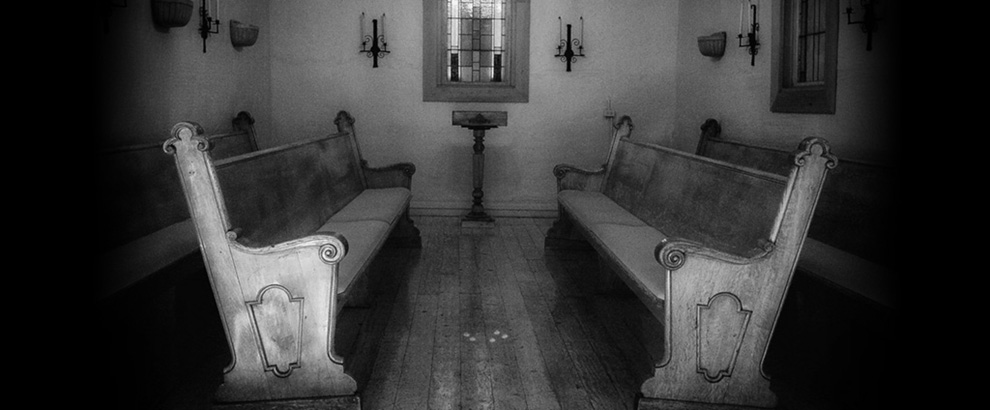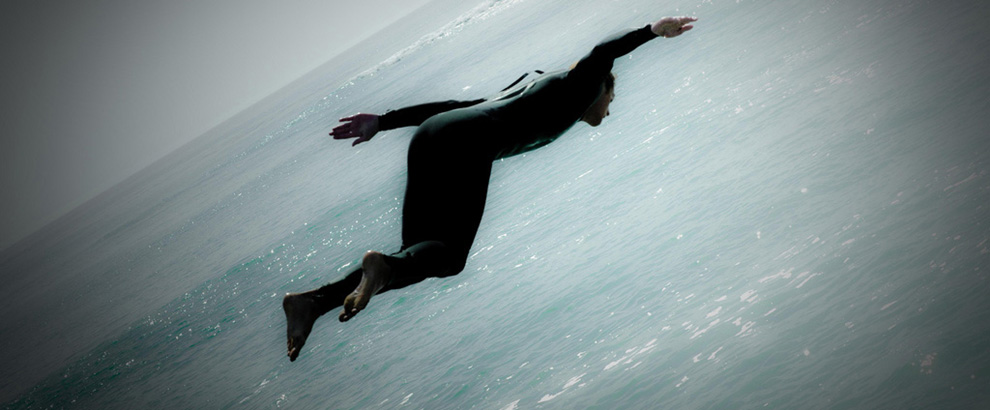
As our 20-year nation-building project draws to a catastrophic close in Afghanistan, what do we have to show for it? It’s a painful question made all the more so by the lives of U.S. soldiers and civilians freshly lost in the terrible bombings on Thursday, not to mention the far greater number of Afghans who have paid, and will continue to do so long after our exit, with their lives and freedom for the brief window of semi-democracy both nations worked with such tenacity and treasure to provide for that beleaguered land.
All of it turning now, with near dizzying speed, to ash.
Questions, doubts and recriminations about both our long-running presence and chaotic exit from Afghanistan dominate our national conversation today, at least temporarily pushing the re-emerging horrors of the Covid pandemic out of the spotlight.
The entire symphony is a treasure, a voyage through sorrow and lyricism whose beauty paradoxically lifts us to deeper appreciation of all that we are—or at least that we can be.
And then, of course, there is the usual non-stop invective of our hyper-partisan times, with Republicans inveighing against the purported incompetence of President Biden, even as Democrats are falling over themselves to proclaim the bad hand and limited options he was dealt by his predecessors—especially the most recent one.
Does anyone doubt for a moment that if this situation had unfolded exactly as it has under the presidency of Donald Trump, the arguments (or more accurately, the arguers) would have been perfectly reversed?
These predictable, lockstep maneuverings into the respective corners of virulent partisanship no matter what the issue do not bode well for the state of our own nation and its very soul. Yet underneath the seemingly omnipresent anger and outrage, there lies the perennial of human sorrow.
The nearly 200 now dead did not exist in a vacuum. They were sons and daughters, mothers and fathers, uncles and aunts and grandparents, friends and neighbors and colleagues. The grief at the horrid conditions of their departure convulses out in concentric, unending waves through all who knew them, all who know someone who knew them, and in a profound sense, the entire watching, empathizing, cringing world.
And now, what shall we do? What shall we ever do?
Raise a fist, or simply bow our heads?
***

***
Henryk Górecki (Gore-etskee) was a Polish composer born in 1933, the same year Adolf Hitler was appointed the chancellor of Germany. Six years later, Germany invaded Poland to set off World War II.
Górecki’s mother, who played piano, died when he was just 2, but his father, also an amateur musician, managed to secure violin lessons for his son amidst the war in 1943. Henryk went on to study and then teach music himself, but his early career, hobbled as was most everyone’s in Russian-controlled Poland after World War II, was focused largely on atonal modernist works of the kind that leaves melody lovers fleeing the symphony hall or studiously avoiding it instead.
By the 1970s, he began a gradual shift toward more traditional choral works that incorporated religious themes. (Some 90% of Poland remains Roman Catholic today, and Górecki, who died in 2010, was among them.)
He wrote his Third Symphony, known as the “Symphony of Sorrowful Songs,” in 1976 after having mined Polish folk songs for suitable material. One song,“Where has he gone, my dear young son?” adapted by the contemporary Polish folklorist Adolf Dygacz, reflected a mother’s lamentations upon losing her son to war. It became the first movement of Górecki’s new symphony.
The third movement also reflects a mother’s mourning, but it is from a 15th century folk song in which the Virgin Mary mourns her dying son on the cross.
The second movement, which will mostly concern us here, takes a different perspective—from an inscription by an 18-year-old woman on the wall of a German death camp in southern Poland in 1944. It read, “Oh Mamma do not cry, no. Immaculate Queen of Heaven, you support me always.”
We’ll let Górecki himself tell why he was so affected by it, in comments to a Polish music journal in 2003:
“I have to admit that I have always been irritated by grand words, by calls for revenge…In prison, the whole wall was covered with inscriptions screaming out loud: ‘I’m innocent’, ‘Murderers’, ‘Executioners’, ‘Free me’, ‘You have to save me’—it was all so loud, so banal. Adults were writing this, while here it is an eighteen-year-old girl, almost a child. And she is so different. She does not despair, does not cry, does not scream for revenge. She does not think about herself; whether she deserves her fate or not. Instead, she only thinks about her mother: because it is her mother who will experience true despair. This inscription was something extraordinary. And it really fascinated me.”
It’s a beautiful sentiment, both on the part of the woman, whose name of Helena Wanda Błażusiakówna we should duly honor here, but also Górecki, who wove only the following plaintive lyrical snippet into the nine-minute lamentation of the second movement:
No, Mother, do not weep,
Most chaste Queen of Heaven
Support me always.
“Zdrowas Mario.” (Ave Maria)
The harshest critics of the time savaged Górecki for, among other things, the repetition of this verse, but for millions of listeners worldwide, every note just rings deeper and more true, many of them elongated to depths that meet the challenge of reflecting such fathomless and haunting pain.
The entire symphony is a treasure, a voyage through sorrow and lyricism whose beauty paradoxically lifts us to deeper appreciation of all that we are—or at least that we can be. All 53 minutes of it is worth a listen—and then many more, available below—but the second movement of nine minutes is arguably its jewel, allowing the soprano to soar to the farthest reaches of emotional expression.
Let’s give it a listen now, with Polish soprano Zofia Kilanowicz and the London Symphony doing the honors at St. Mary’s Basilica in Krakow.
***
***
Like all his other music up to the time, sales of “Symphony of Sorrowful Songs,” despite its simplified, more melodic tones shorn of all modernist artifice, did little to move the needle on Górecki’s modest circumstances and minimal exposure under communist rule.
But then the Berlin Wall fell in 1989. Two years later, two momentous events conspired to elevate Górecki and his Third Symphony to previously undreamt heights of classical music stardom. (Those last three words having long been a self-canceling phrase.) Poland held its first free elections since 1920 as the Soviets began withdrawing, and Nonesuch Records recorded the work with the London Sinfionetta and American soprano Dawn Upshaw.
The record’s release in May, 1992 resulted in an astonishing reception, zooming to #1 and staying there on Billboard Magazine’s classical sales charts for 37 straight weeks. (And in the top 25 for 93 weeks.) Probably more astonishing still was that it peaked at #6 on the British pop music chart.
The album sold more than 600,000 copies by the end of that year, and today, sales stand at over one million, an unheard of number for a serious classical work.
It was all rather dizzying but not unwelcome for Górecki, who had so long labored in relative anonymity and suddenly found himself hailed worldwide and in unprecedented demand for media interviews, musical commissions, and even multiple audiences with the Pope.
From all indications, however, the fame fazed but didn’t change him. In a 1994 interview with the “New York Times,” he drily observed about his 60th birthday celebration, “There are 25 interviews, concerts, jubilees and everyone wants me to be present. The months have only 30 days, one has 28. There are no miracles.”
Probably true, but that does not mean that his gift of the Third Symphony was not somehow divinely inspired, if we can stretch that term to encompass a sort of divinity always available to—because it resides within—humankind. Not only in our ecstatic moments of love and transcendence, but also in our depths of sadness and despair, when the world seems at its darkest and most unforgiving, but rather than yield to it, a voice angelic and pure rises from the dark, resolutely lifting and lilting toward the light.
***
In its entirety…
***
Check out this blog’s public page on Facebook for 1-minute snippets of wisdom and other musings from the world’s great thinkers and artists, accompanied by lovely photography.
http://www.facebook.com/andrew.hidas/
Deep appreciation to the photographers! Unless otherwise stated, some rights reserved under Creative Commons licensing.
Elizabeth Haslam, whose photos (except for the books) grace the rotating banner at top of page.
https://www.flickr.com/photos/lizhaslam/
Library books photo by Larry Rose, all rights reserved, contact: larry@rosefoto.com
Candles by Mike Labrum https://unsplash.com/@labrum777














Today is Sunday. What better way to celebrate it than listen to Henryk Górecki’s “Symphony of Sorrowful Songs”? Once more, thanks for expanding my catalog of “Symphonies I’ve Never Heard Before.” Incorporating folk songs, hymns and anthems into more extensive works like a symphony or ballet has long been a staple of classical composition. Tchaikovsky inserts the Russian National anthem “God Save the Tsar” throughout his tone poem “March slave”. I guess he was fond of anthems. “La Marseillaise”, the French national anthem, highlights the Russian victory over the Napoleon’s invading army in his “1812 Overture”. Roy Harris, an underrated 20th century American composer, employed folk music in many of his works, especially “Symphony #4” (Folk Song), which included the songs “The Streets of Laredo” and “When Johnny Comes Marching Home”. “Simple Gifts”, a 19th century Shaker hymn, is the most recognizable melody in Aaron Copeland’s ballet “Appalachian Spring”. Czech composer Bedřich Smetana’s “Fantasy on Czech Folk Songs” devotes itself entirely to his own nation’s popular songs. Hungarian composer Béla Bartók collected folk songs from many sources and sprinkled them into numerous pieces, such as his suite “Romanian Folk Dances” and “Peasant (Magyar) Folk Songs”. Even Ludwig Beethoven wasn’t shy about using anthems in his compositions. “Rule Britannia” and “God Save the King” are integral themes in “Wellington’s Victory”. Again, thanks for another great Brilliant Song entry.
Yes, some sacred choral music is always a fine fit for a Sunday morning, my man. Am familiar with most but not all of your citations there, so You Tube here we come… I was getting near the end of your paragraph and was about to say, “Wait, how about my countryman Bartok?” but you saved the day there!
Happy to hear the Górecki was new to you; it’s a great piece of work that rewards repeated listening in an attentive setting. Sorry to say I have yet to see it live myself, or even presented anywhere. Don’t know why that would be, given its huge record sales in the U.S.